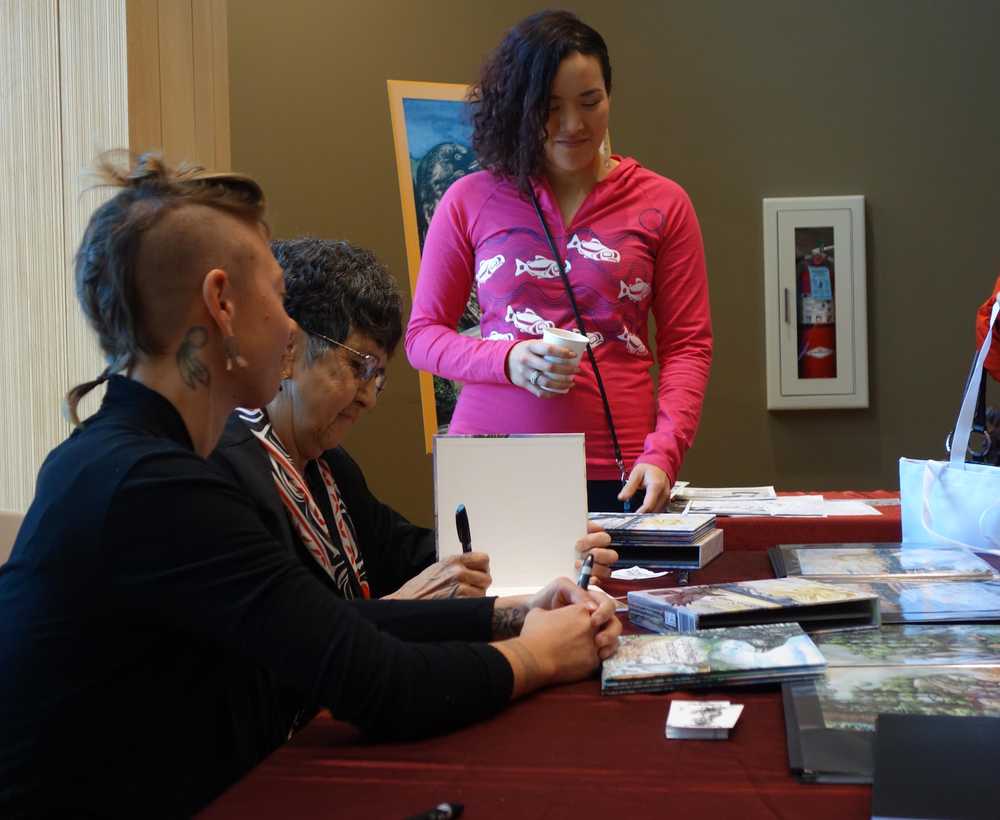Not so long ago, children’s books with an authentic focus on Alaska Native stories and culture were harder to find.
That’s changing with Baby Raven Reads, a Sealaska Heritage Institute program focusing on children up to age five.
Dec. 10, SHI released five new children’s books “that reflect the Native worldview;” it aims, said SHI Chief of Operations Lee Kadinger, to publish 18, and to distribute the books to libraries around Southeast Alaska. Through social media, they’ve even had a request from Europe that the books be translated into French.
“When we looked at it eight years ago, there were no books like this out on the market,” he said. “That was really our goal in the grant — to make high-quality, culturally-based, place-based books.”
Three of the books have to do with Raven creation stories: Raven and the Box of Daylight,” “Raven Brings us Fire,” and “Origins of Rivers and Streams.” They’re written in rhyme by retired Sitka first grade teacher Pauline Duncan and illustrated by Lindsay Carron. At the book release, Carron brought the originals of each of her illustrations, originally done with colored pencil, and completed in colored pencil, watercolor and ink.
Saturday also saw the release of “Tlingit Alphabet,” illustrated by Crystal Worl, edited by Katrina Hotch, Linda Belarde and Keri Eggleston, and reviewed by Dr. Walter Soboleff. That book’s words will be added to one of SHI’s language apps, Kadinger said.
Earlier this month, the institute released “Colors,” illustrated by David Lang.
Lang and Duncan worked together on “Ten Sitka Herring,” one of the first three books released under the grant. Worl drew the formline in two of the other first three books, “Baby Eagle” and “Baby Raven,” which teach Tlingit words for clan crests. Nobu Koch did the illustrations of the environment in the books.
“The release of the books is groundbreaking because so few culturally-relevant children’s books from Southeast Alaska exist that are not tailored for the commercial market. And, research has shown that Native students do better academically when their cultures are incorporated into learning materials and classes,” said a press release from SHI.
Incorporating traditional stories is something Duncan did for years, as a first-grade teacher in Sitka. “I had it (two of the stories) up in my classroom,” she said. (She also created felt panels that told the stories visually, which she brought with her to a Baby Raven Reads event prior to the release.
Jeff Ketah said he and his wife Crystal were there with their kids, two-year-old Selena and five-year-old Dexter, because “It’s important to read to the kids, and also for them to learn a little bit about their heritage.”
• Contact Capital City Weekly editor Mary Catharine Martin at maryc.martin@capweek.com.

